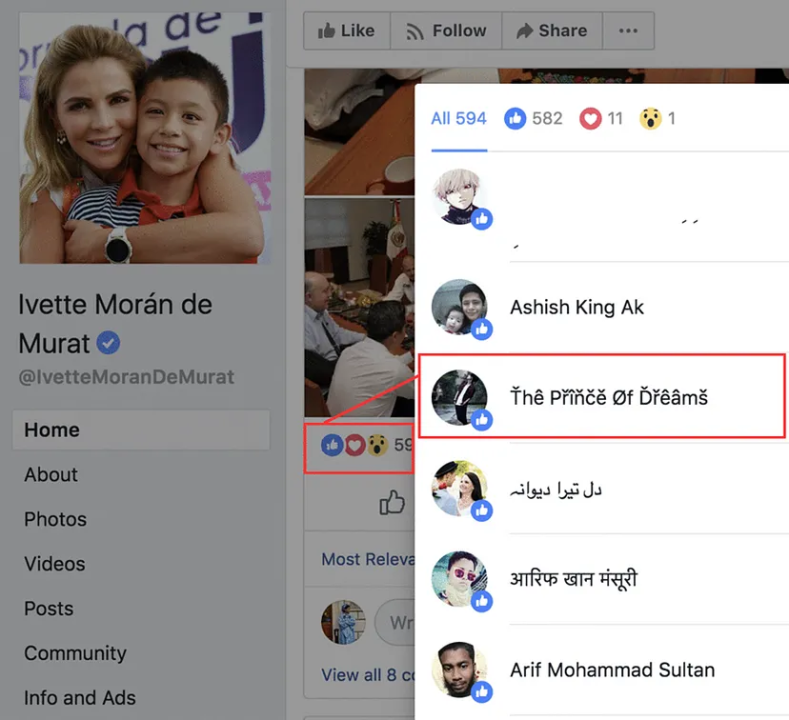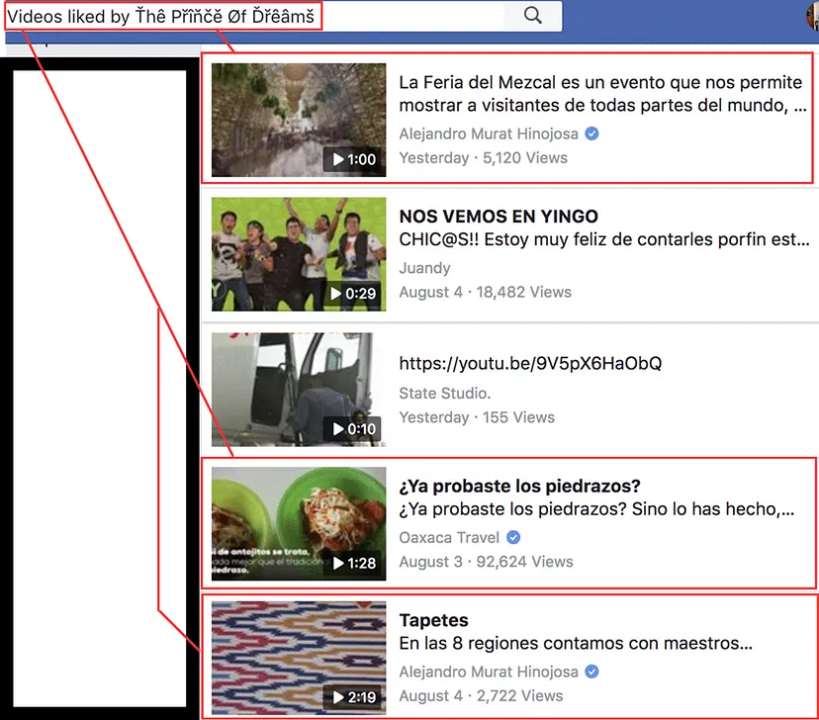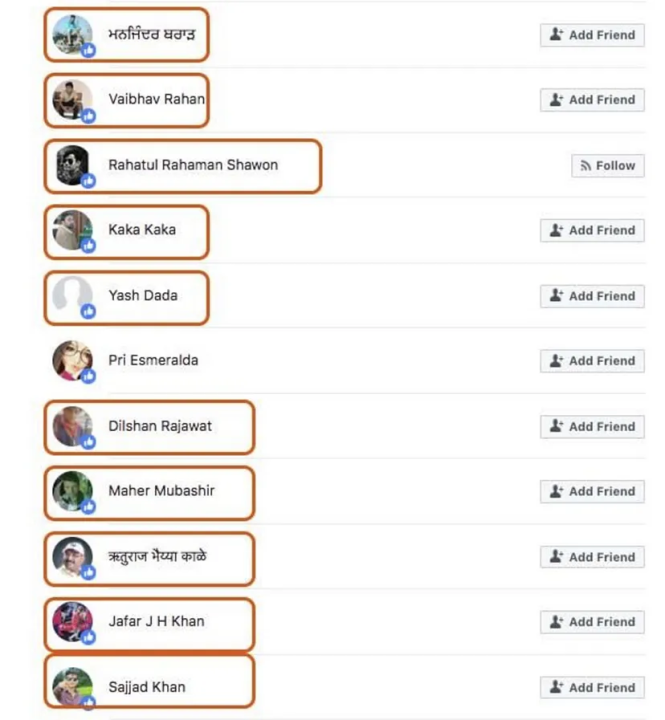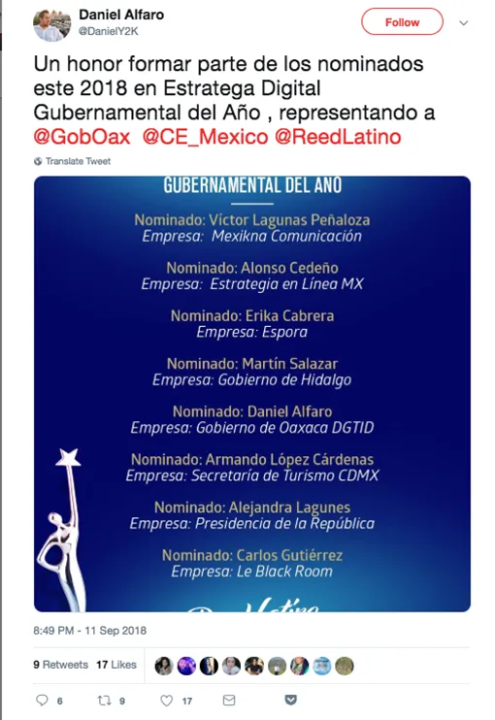#ElectionWatch: Likes from Afar in Oaxaca
Engagement from South Asia highly suspicious on local government pages in Mexico
#ElectionWatch: Likes from Afar in Oaxaca

BANNER: (Source: @DFRLab)
Inauthentic activity originating from South Asian Facebook accounts artificially inflated the number of Facebook “likes” on social media content for and about the Government of the State of Oaxaca in México. The main beneficiary of the seemingly inauthentic activity is Alejandro Murat Hinojosa, Governor of the State of Oaxaca, in southern Mexico. Similar reactions can be seen on his official state government page and the Guelaguetza page — an account intended to promote the Guelaguetza festival, an annual traditional indigenous festival celebrated in the City of Oaxaca every July.
Our findings do not imply the South Asian “likes” were paid for with Mexican taxpayers’ money nor that government authorities were responsible for their appearance on social media profiles of the governor’s office. Nonetheless, it is something that should be carefully investigated by Mexican authorities, media, and civil society.
As @DFRLab recently reported in Mexico and Brazil, some users and pages seek to monetize engagement; while others — particularly election-related ones — apparently take advantage of such services. These instances are evidence that these techniques are also used in politics outside of election cycles, at least in Mexico. It is worth remembering that Facebook does not allow engagement, such as “likes” or “follows,” to be bought and sold within its platform.
Mexican Governor, Asian “Likes”
The high rate of South Asian engagement with Spanish-language political content in Mexico is unusual. The proportion and number of “likes” in comparison with Facebook’s other options of loves, laughs, and angry reactions, also appeared distorted. Notice the high volume of such reaction in this post by Governor Murat.

Similar engagement patterns benefited Facebook posts by Murat’s close allies, including his wife Ivette Moran de Murat and Raúl Bolaños Cacho Cué, his former personal secretary and recently elected Senator for Oaxaca.



These posts saw a high proportion of “likes” from South Asian users who did not appear to be Spanish speakers nor to exhibit close ties to Mexico, with high rates of “likes” over other reactions. Several official pages also had posts boosted by similarly suspicious accounts.

Save for an unlikely and sudden interest from South Asia in local government in Mexico, the activity of these users appeared inauthentic. Several such accounts liked videos and pictures from different contexts and languages; this activity ranged from liking an image of a Venezuelan girls’ pageant to a picture of an Indian Masterchef participant. This is more consistent with “likes-for-hire” activity than with organic user activity. Organic users typically will not interact with content based in countries with which they have no apparent connection or in languages of which they do not demonstrate a strong command.

To analyze the depth of this inauthentic behavior, NetVizz, a Facebook application, was used to analyze posts from April to October on Governor Murat’s Facebook page. The analysis found that a high number of posts, received a narrow range of 2,000–2,500 “likes” each. While this could reflect genuine engagement, the numerical distribution was extremely narrow, which could suggest an organized reaction: it is very unlikely that many posts get roughly the same amount of interactions.

The Administrator
Both the Oaxacan state government and the Guelaguetza festival Facebook pages are run by the same user, “Leinad Avazq,” whose Facebook profile revealed that he manages both the Guelaguetza Oficial page and the Gobierno del Estado de Oaxaca page.

The Facebook profile “Leinad Avazq” belongs to Daniel Alfaro (Leinad is a semi-palindrome for Daniel), who claims to work for the Government of the State of Oaxaca. A picture depicting Alfaro holding several awards in the Reed Latino Awards in 2017 was published both on the Leinad Facebook profile and on the Twitter account @DanielY2K belonging to Daniel Alfaro. Various pictures of the same person on both accounts further indicate they belong to the same Daniel Alfaro.


In a tweet from @DanielY2K, Alfaro shared that he was nominated for the “Government Digital Strategist of the Year” award in 2018 for his work on the Oaxaca government’s General Directorate of Technologies and Digital Innovation (DGTID, in Spanish).

A photo on the Leinad Avazq Facebook profile shows the user participated in a segment presented by Daniel Days and Enrique García, both directors at Sensei Media. This segment was held during the event “Campaign Tech 2018” in Jalisco, Mexico, on February 12 and 13, 2018. According to the YouTube user that posted the video of the event online, Campaign Tech is organized by the magazine Campaigns & Elections Mexico.

In the video of the conference, at minute 33:22, García introduced Alfaro as Sensei Media’s client and as Director of Digital Government of Oaxaca. Alfaro presented himself as an employee of the DGTID. Based on the video of the event segment, Sensei Media worked on part of the Guelaguetza 2017 communication campaign, specifically for the advertisement “Comercial de la Guelaguetza 2017 (Versión 1 min)” in Spanish.
Sensei Media has worked on several other projects affiliated with the Government of the State of Oaxaca. They created the Guelaguetza 2018 social media campaign and won a Reed Latino Award 2018 for the “Best Government Campaign,” an award for the 2017 Guelaguetza campaign. In 2017, Sensei Media was also nominated for best spot on the internet for a government campaign, in this case for the first 100 days of the administration of Alejandro Murat. The Reed Latino Awards is also organized by the magazine Campaigns & Elections Mexico, according to its web page.


Though evidence shows Alfaro was in charge of some of the pages being boosted by inauthentic behavior and he, possibly alongside Sensei Media, had a role in shaping the digital communications of the Oaxacan government, it is unclear if he is responsible for the appearance of South Asian likes on the page.
Fake “Likes” for the Digital Government of Oaxaca
As shown above, Alfaro claimed to work in the DGTID. This entity was created by decree on May 22, 2017, by Governor Murat as a decentralized agency of the Secretary of Finance of Oaxaca. Its purpose, according to the decree, is to “consolidate under the same normative and collaboration framework the management and operation of the information and communication technologies” of Oaxaca’s public administration and entities. It is currently led by Eduardo José Herrerías López.
There was at least one post related to this entity that exhibits the same trend of suspicious “likes.” The post, from July 31, 2018, shows Herrerías López entering into an academic agreement with Universidad Anahuac Oaxaca, a private university. The post received several “likes” from South-Asian accounts, as can be seen in the screenshots below.


According to the decree, the DGTID was charged with overseeing the content, dissemination, and information flow of the government’s own digital communication strategies on social media platforms. Apart from the aforementioned decree and some social media posts as the previous one, their official webpage shows no information about its activities. If these tasks are the responsibility of the DGTID, it is notorious to see that the content shared by the official state government Facebook page referring to this public agency also garnered artificial “likes.”
Conclusion
Several official pages from the Oaxacan government — from Governor Alejandro Murat as well as those in his inner circle — have been boosted by the activity of South Asian Facebook accounts that exhibit behavior consistent with inauthentic activity on the platform.
Evidence shows that some of these accounts are likely run by Daniel Alfaro Vasquez, who works with the DGTID, an entity in charge of overseeing the state’s digital communications strategy.
The activity exposed in this research is like other social media manipulation efforts the @DFRLab and the Adrienne Arsht Latin America Center have exposed in Latin America. It remains unclear, however, if Alfaro was responsible for the apparent inauthentic behavior or if public money was used to contract these services.
This evidence shows the need for greater oversight from both authorities and civil society in Mexico. As happens in electoral democracies, government communication campaigns on social media may seek to shape public perception of local, state, and federal public entities. Nonetheless, any activity conducted by a public entity or official should be subject to public scrutiny, and civil society and authorities should be attentive to the possible negative effects this type of manufactured engagement may have on official communication campaigns.
#ElectionWatch in Latin America is a collaboration between @DFRLab and the Adrienne Arsht Latin America Center at the Atlantic Council.
Follow along for more in-depth analysis from our #DigitalSherlocks.

